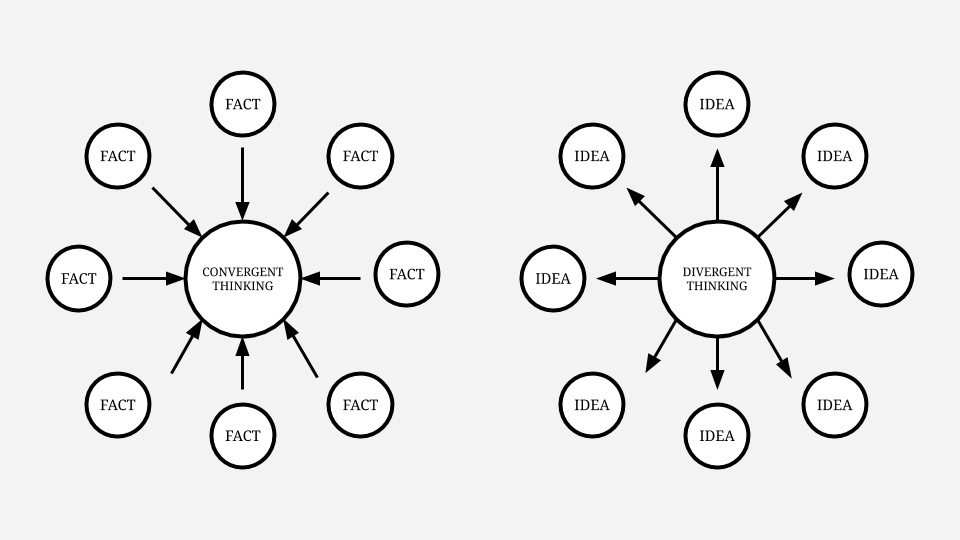When trying to solve a problem, we often tend to look for useful facts that may guide us to the “correct” answer. This type of thinking—called convergent thinking—works great when the problem we want to solve is clear and requires a reasonable solution. But for bigger, more complex problems, convergent thinking may be too limited. By focusing on existing facts to get to a specific answer, we are likely to miss some interesting solutions. Divergent thinking is all about exploring many ideas based on a question, creating unexpected connections, and encouraging spontaneity.
Divergent thinking and playfulness
Research has found that divergent thinking is linked to playfulness and creativity. Children who play more tend to display traits such as nonconformity, curiosity, persistence, and a willingness to take risks—all important characteristics in the quest of innovative solutions. This results in increased levels of creativity in teenage years and adulthood.
While convergent knowledge is based on prior knowledge, divergent thinking is based on imagination. It happens in a more spontaneous, non-linear, free-flowing way.

Note that it is not to say convergent thinking is always bad. In fact, convergent thinking works great in combination with divergent thinking. Once you’re done generating many ideas—some of them quite crazy—convergent thinking will help you filter through the options and figure out which solution can be implemented and actually solve your problem.
How to practice divergent thinking
There are quite a few activities that have been shown to promote divergent thinking. Give these a try and see which of them have the best impact on your creativity.
- Mind mapping. Start in the centre and add nodes, connecting your branches together. Mind mapping will help your brain work by association.
- Brainstorming. Think quantity versus quality. Generate as many ideas as possible. Say “yes and” to build on previous ideas. See my guide to brainstorming.
- Free writing. Focus on the question and write non-stop about it for a short period of time, in a stream-of-consciousness way.
- Journaling. This is also a great way to clarify your thinking while generating new ideas. Not to mention all the mental health benefits.
- Art. Doodling, painting, creating graphs and illustrations will help you think outside the box and tap into your creativity.
- Role playing. Role play is used a lot in psychotherapy, but it’s also an amazing way to practice divergent thinking by putting yourself in the shoes of a different character.
Contrary to popular belief, divergent thinking is not a personality trait, and it’s certainly not fixed—it can be practiced. In the spirit of fostering a growth mindset, try to practice divergent thinking next time you want to tackle a problem.
